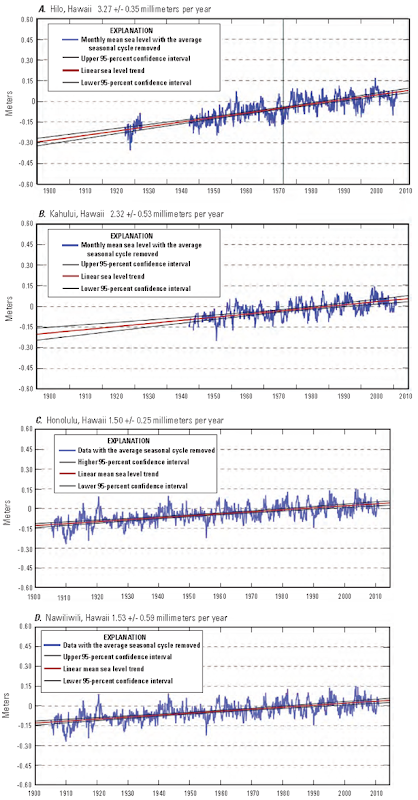Graph of the Day: Mean-sea-level Trends in Hawaii, 20th Century – 2010
Mean-sea-level trends at A, Hilo, 1927–2010; B, Kahului 1947–2010; C, Honolulu 1905–2010; and D, Nawiliwili, 1955–2010, Hawaii. Data from National Oceanic and Atmospheric Administration, 2011 Sea level has risen around Hawaii approximately 1.5 mm/yr over the past century. Although this rate may seem small, long-term sea-level rise can lead to chronic coastal erosion, coastal flooding, and drainage problems, all of which are experienced in Hawaii. This long-term trend also increases the impact of short-term fluctuations when extreme tides cause episodic flooding and erosion along the coast (Firing and Merrifield, 2004; Fletcher and others, 2010). Coastal erosion, although not solely tied to climate change, is an important factor in managing the problem of rising sea level. Sea-level rise accelerates and expands erosion, potentially affecting beaches that previously were stable. Chronic erosion seaward of developed lands has historically led to seawall construction, resulting in beach loss (Fletcher and others, 1997).
National Assessment of Shoreline Change: Historical Shoreline Change in the Hawaiian Islands [pdf]
